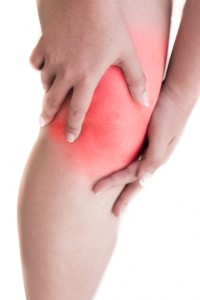What causes PFPS?
 PFPS is considered to be an overuse injury caused by the irregular movement (tracking) and rubbing of the patella over the femur, while the knee is bending and straightening. It is the repetitive bending and straightening of the knees that makes this condition more prevalent in runners. Instead of gliding smoothly through a groove (called the trochlea) at the femur, the poor alignment of the knee means the patella can mistrack and instead rub against the femur itself. This causes irritation at the joint and damage to the underlying cartilage and bone. Other contributing factors include:
PFPS is considered to be an overuse injury caused by the irregular movement (tracking) and rubbing of the patella over the femur, while the knee is bending and straightening. It is the repetitive bending and straightening of the knees that makes this condition more prevalent in runners. Instead of gliding smoothly through a groove (called the trochlea) at the femur, the poor alignment of the knee means the patella can mistrack and instead rub against the femur itself. This causes irritation at the joint and damage to the underlying cartilage and bone. Other contributing factors include:
- Muscular imbalances in the quadriceps
- Increase in training intensity
- Overloading the knee during squatting/jumping
- Poor foot biomechanics
- Poor alignment of the lower limbs
- Increasing age
- Female gender (because of the differences in leg alignment, the greater tendency for joint laxity, generally weaker hip muscles and hormonal fluctuations)
What are the symptoms?
Symptoms of PFPS often come on gradually during high-impact activities such as running, squatting and climbing stairs. Pain may continue on walking and in severe cases, may even be felt during rest. Symptoms can include:- Pain and tenderness behind the kneecap
- Radiating pain around the knee
- Inflammation
- Pain after prolonged sitting
 How is it treated?
How is it treated?
Initially, treatment will look at reducing the painful symptoms. Following the PRICE principles (protection, rest, ice, compression, elevation) can help reduce pain and swelling. Treatment will then focus on treating the cause and correcting any alignment issues that may cause the pain to recur in the future. This may involve:
- Orthotics to correct foot and leg posture (described below)
- Footwear assessment to ensure your shoes are helping and not hindering your recovery
- Strengthening weak muscles to restore good function
- Stretching to ensure an adequate range of motion through your joints and muscles
- Gait retraining and running technique analysis
- Activity modification
- Avoid those activities that worsen the symptoms
- Use a brace to stabilize the knee cape
- Your podiatrist may strap your knee to stabilize it and perform massage therapy to release the tight quad muscle
- Surgery may be considered if non-surgical treatments do not improve the condition








